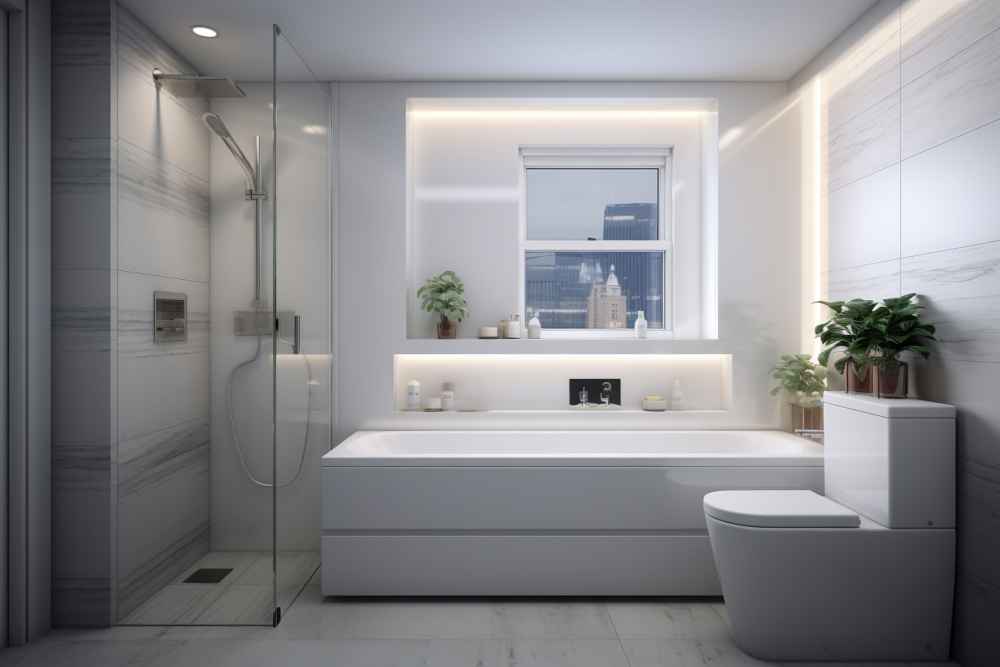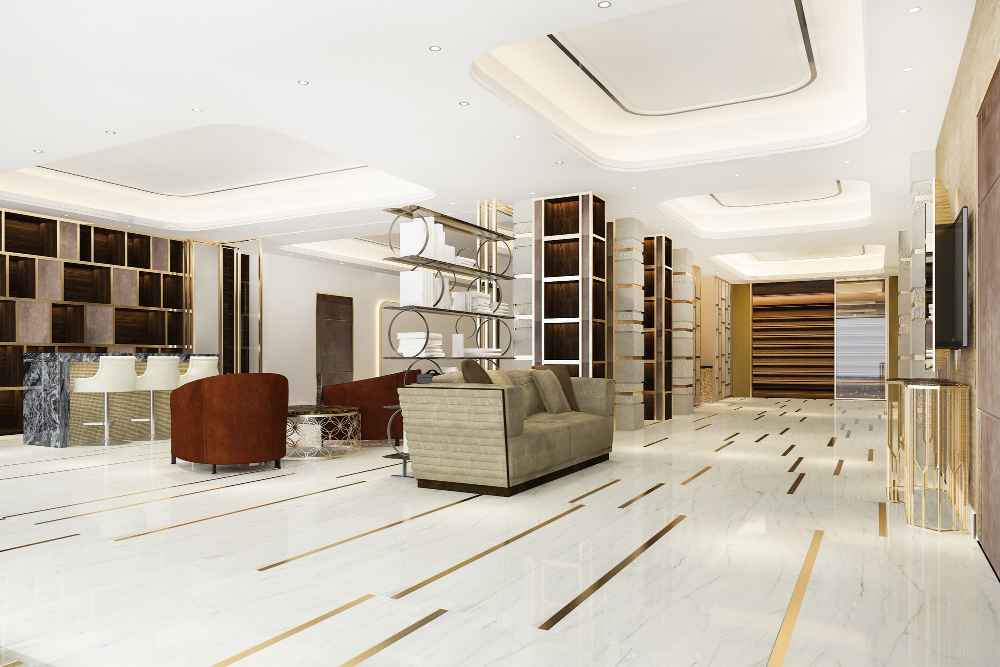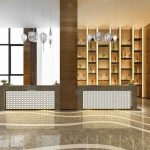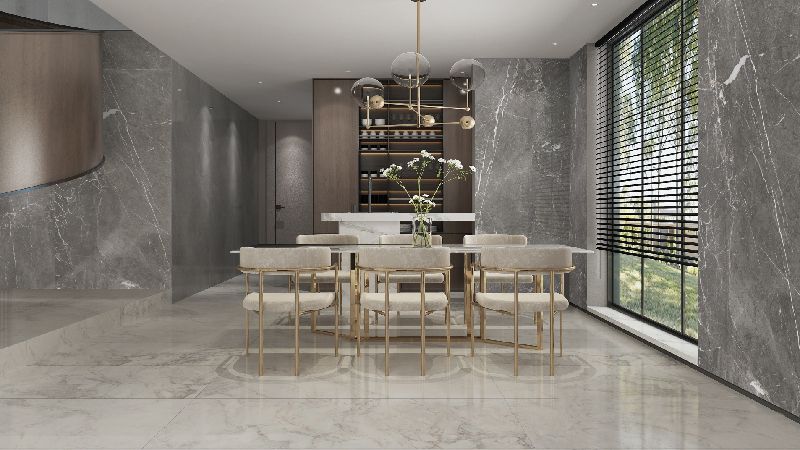Ensuring safety in wet areas like bathrooms and kitchens is paramount for both homeowners and businesses. Slip-resistant surfaces are essential in these spaces to prevent accidents and injuries. Leading vitrified tiles suppliers are at the forefront of addressing this critical need. By developing and providing high-quality slip-resistant vitrified tiles, they offer solutions that combine safety, durability, and aesthetic appeal. These suppliers use advanced materials and innovative technologies to create tiles that not only look great but also provide the necessary traction to prevent slips and falls. In this article, we explore the science of slip resistance in vitrified tiles, focusing on the innovations and standards set by leading vitrified tiles suppliers to ensure safe and stylish wet areas. From the latest advancements in tile manufacturing to rigorous testing and certifications, we delve into how these suppliers are making homes and businesses safer, one tile at a time.
Understanding Slip Resistance in Vitrified Tiles

Slip resistance refers to the ability of a surface to prevent slips and falls, which is especially important in wet areas such as bathrooms and kitchens. Leading vitrified tiles suppliers are constantly improving their products to enhance slip resistance and ensure safety. The texture, finish, and material composition of vitrified tiles play a significant role in their slip-resistant properties. Rough or textured surfaces provide better grip by increasing friction, while matte finishes are generally less slippery compared to glossy ones. Additionally, high-quality vitrified tiles are made from advanced materials that are engineered to be non-porous and resistant to water absorption, maintaining their slip-resistant properties over time. By focusing on these elements, suppliers can develop tiles that not only meet aesthetic and functional needs but also provide a safer environment in areas prone to moisture.
The Science Behind Slip Resistance

- Surface Texture: The micro-texture of a tile’s surface plays a crucial role in slip resistance. Rough or patterned surfaces increase friction between the tile and the foot, enhancing grip and reducing the likelihood of slips, especially in wet conditions.
- Coefficient of Friction (COF): This scientific measure quantifies the slip resistance of a tile. A higher COF indicates better slip resistance. Tiles are tested under both dry and wet conditions to ensure they meet safety standards, with higher COF values signifying safer tiles for wet areas.
- Material Composition: The materials and compounds used in manufacturing vitrified tiles contribute to their slip resistance. High-quality vitrified tiles often incorporate non-porous materials that resist water absorption, maintaining consistent slip resistance even when wet.
- Finish Types: The type of finish applied to the tile impacts its slip resistance. Matte and textured finishes are more effective at preventing slips compared to glossy finishes, as they provide better traction and reduce the chances of slipping on wet surfaces.
Testing and Standards for Slip Resistance
To ensure the effectiveness of slip-resistant vitrified tiles, rigorous testing is conducted. One common test is the Coefficient of Friction (COF) test, which measures the frictional force between the tile surface and a reference material. Vitrified tiles suppliers adhere to international standards and certifications to guarantee the quality and safety of their products. These standards help ensure that the tiles meet the necessary slip resistance requirements for wet areas.
Advantages of Slip-Resistant Vitrified Tiles

Slip-resistant vitrified tiles offer numerous benefits, making them an ideal choice for wet areas:
- Durability: These tiles are renowned for their long-lasting quality. They are designed to withstand heavy foot traffic and resist wear and tear over time. This makes them a practical and cost-effective solution for both residential and commercial spaces. The robust nature of vitrified tiles ensures they maintain their structural integrity and slip-resistant properties even in high-traffic areas.
- Easy Maintenance: Slip-resistant vitrified tiles are straightforward to clean and maintain. Their non-porous surface prevents the absorption of water and stains, making it easy to wipe away spills and dirt. Regular cleaning with mild detergents keeps these tiles looking new and preserves their slip-resistant properties, ensuring a safe environment with minimal upkeep.
- Aesthetic Variety: These tiles come in a wide range of designs, colors, and finishes, allowing them to complement any interior style. Whether you prefer a modern, minimalist look or a more traditional, decorative appearance, slip-resistant vitrified tiles can meet your aesthetic preferences. This versatility makes them suitable for various applications, from sleek bathroom floors to elegant kitchen backsplashes.
- Safety: The primary advantage of slip-resistant vitrified tiles is their ability to prevent slips and falls. Their textured surfaces and finishes provide enhanced traction, significantly reducing the risk of accidents in wet areas like bathrooms, kitchens, and entryways. This safety feature is crucial for creating secure environments in homes, workplaces, and public spaces.
By choosing tiles from reputable vitrified tiles manufacturers, homeowners can ensure both safety and style in their spaces. Additionally, slip-resistant tiles, such as those used in porcelain wall and floor tiles, offer a long-lasting solution that combines functionality with beauty.
Applications of Slip-Resistant Vitrified Tiles
Slip-resistant vitrified tiles are versatile and essential for enhancing safety in various environments. They are particularly beneficial in areas prone to moisture and high foot traffic. Common applications include:

- Bathrooms: Prevent slips in showers and on wet floors. Slip-resistant tiles provide essential safety in one of the most accident-prone areas of the home, ensuring a secure footing for everyone.
- Kitchens: Provide a safe cooking environment where spills and splashes are common. These tiles help prevent accidents in the kitchen, maintaining a safe and functional space for meal preparation.
- Pool Areas: Enhance safety around wet surfaces, such as pool decks and surrounding areas. The slip-resistant properties of these tiles ensure that poolside activities remain safe and enjoyable.
- Entryways: Ensure safe footing at entrances, especially during rainy or snowy weather. Slip-resistant tiles at entryways help prevent slips and falls, creating a safer transition from outdoor to indoor spaces.
- Commercial Spaces: Meet safety standards in public and commercial areas, such as restaurants, hotels, hospitals, and shopping malls. Slip-resistant vitrified tiles are essential for maintaining a safe environment for employees and visitors, helping businesses comply with safety regulations.
- Laundry Rooms: Prevent slips in areas where water and detergents can spill. Slip-resistant tiles in laundry rooms help maintain a safe environment, reducing the risk of accidents during household chores.
By incorporating slip-resistant vitrified tiles in these applications, homeowners and businesses can create safer and more functional environments. Leading vitrified tiles manufacturers in India offer a variety of slip-resistant tile options to suit different needs and preferences, ensuring that every space benefits from enhanced safety and aesthetic appeal.
How to Choose The Right Slip-Resistant Vitrified Tiles
When selecting slip-resistant tiles, it’s essential to consider several factors to ensure safety and aesthetic appeal. Consulting with experienced vitrified tiles suppliers can help homeowners make informed decisions. Reliable suppliers offer a range of options, ensuring that every need is met with the highest quality products. Key factors to consider include tile size, texture, and finish. Larger tiles can create a more seamless look but may require more careful installation. Rougher textures provide better slip resistance, making them ideal for wet areas. Additionally, matte finishes are often more slip-resistant than glossy ones, offering enhanced traction and a sophisticated appearance. By considering these factors, homeowners can select the perfect slip-resistant vitrified tiles that combine safety, functionality, and style.
Maintenance and Care for Slip-Resistant Vitrified Tiles

Maintaining slip-resistant tiles is straightforward but essential for long-term effectiveness. Regular cleaning with appropriate products will preserve their slip-resistant properties. Vitrified tiles manufacturers provide guidelines on the best maintenance practices to keep tiles looking and performing their best.
- Regular Cleaning: Use mild detergents and non-abrasive tools.
- Avoid Harsh Chemicals: These can damage the slip-resistant finish.
- Routine Inspections: Check for wear and tear periodically.
- Prompt Repairs: Address any damages quickly to maintain safety.
Start You Journey with Best Vitrified Tiles Manufacturers
Slip-resistant vitrified tiles are a crucial element in ensuring safety in wet areas. By understanding the science behind slip resistance and choosing tiles from reputable vitrified tiles manufacturers, homeowners can create safe, stylish, and functional spaces. To explore the best options for your specific needs, consult with trusted suppliers. For more information and to find a wide range of vitrified tiles,contact us. If you have any questions or need assistance, please don’t hesitate to reach out to us.










